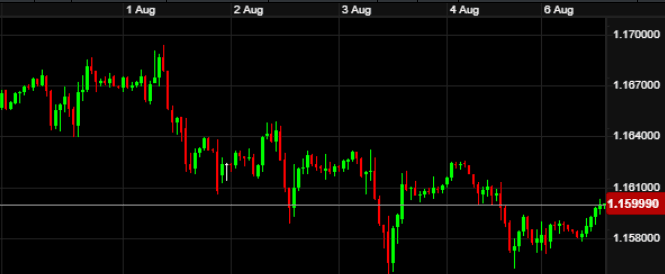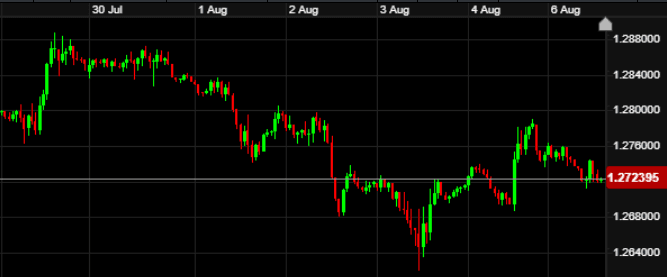ACM Update 07-08-23

The Bank of England’s MPC delivered what most economists expected last week, but what most UK households didn’t want. Their fourteenth rate hike in a row took UK interest rates to their highest since March 2008.
Despite this, sterling shed almost four cents versus the Dollar in the space of five working days. With US inflation figures and UK GDP data over the coming days, the pound isn’t looking likely to have a relaxing August.
As expected the latest Bank of England meeting was the main talking point last week. Andrew Bailey and his fellow MPC members produced a widely expected 25 basis point hike but were split three ways in their preferred action. The nine members of the committee haven’t been on three different tangents since their December meeting.
This time, six members wanted a 0.25% hike, two members (Jonathan Haskel & Catherine Mann) saw the need for a 0.50% rate hike, whereas the dovish Swati Dhingra wanted rates to be kept on hold at their current level. The move does show somewhat mixed messages from the bank, but one thing which was clear, was the statement from Andrew Bailey which followed.
The Governor stated that interest rates would not be cut until there was “solid evidence” that inflation is not only falling, but staying low. Not good news for those on variable mortgages, but enough to provide a slight boost to GBP with the investment prospect of interest rates remaining higher for longer. Chief Economist, Huw Pill, stated in a speech on Friday that there is growing evidence that rate hikes are slowing inflation. He warned that further surges in gas or food prices could cause policy action though.
Inflation has already been one of many factors impacting high street spending of late. This year, the number of people spending on the high street recorded its first July drop since 2009. Cost of living increases, rail strikes, as well as one of the wettest July’s on record forced people to shop more online or at out of town retail outlets, according to the analysis firm Springboard.
Despite interest rates increasing and property prices falling, UK mortgage approvals are still performing well, although there is often a few months lag between rate hikes and slowing approvals. The figures for July were at their best level since November. Elsewhere, UK PMI data for the services sector demonstrated a small amount of growth.
Overall, a neutral week for GBP despite the widely-expected rate hike. Lingering concerns remain about the outlook for the UK economy though, which is definitely holding the pound back. The latest GDP data lands this Friday. Movements for the week can be seen below:

The Eurozone was a little busier with data releases, kicking off the week with a raft of German data. On the positive side, import prices dropped by 1.6% on the previous month, which will help the inflation picture. On the negative side, retail sales dropped by 0.8%, so clearly shoppers don’t yet feel like they are willing enough to spend rather than save.
For the Eurozone as a whole, retail sales for June contracted by 0.3%. In fact the last time they showed a positive figure was January.
There is better news though in some of the other data, which helped stabilise the Euro against a lot of the other majors last week. Eurozone unemployment dropped a fraction to 6.4% having been on a steady decline since mid-2020. This figure is the lowest unemployment has been in the bloc since the inception of the Euro in 1999.
Inflation is continuing to cool with the latest flash estimate coming in at 5.3%, down from 5.5% the previous month. As with the UK, Services sector data for the Eurozone wasn't spectacular, but no worse than forecast. The Euro thus enjoyed a more stable week.
For a week with a central bank meeting elsewhere, the US Dollar saw most of the action. The outlook from last week’s Fed meeting helped to boost the Dollar back from 1.30 to circa 1.26 in the five days ending 3rd August.
Unemployment in the US is now down to 3.5%, a fraction off the 3.4% low we saw a few months ago. Equally, weekly unemployment claims are remaining at a low level, this week just a fraction above the week before. The American economy seems to have successfully navigated high interest rates without impacting the economy or jobs market too much.
Friday’s non-farm payrolls figures, whilst slightly under expectation, are also consistently showing jobs added to the economy. Against an expectation of the 200,000 jobs added, 187,000 was the actual figure. Whilst positive, this and unemployment remaining low makes it less likely that the Federal Reserve will be raising interest rates at their next meeting in September.
Following the data, the Dollar shed circa 1% against the Euro and 0.5% against sterling during Friday afternoon. Movements for the week can be seen in the chart below.

For those trading the Australian Dollar, it weakened considerably post the latest Reserve Bank of Australia meeting last week. The RBA opted not to raise interest rates from their current 4.10%, to the surprise of many analysts. Does this signal the end of the current rate hike cycle? The door is being kept open for now…. Sterling-Aussie moved to its highest level (just shy of 1.95) since the start of the pandemic.
This week:
Monday – Canadian Bank Holiday, UK Halifax House Price data (07:00 UK time), Bank of England Chief Economist Huw Pill speech (17:00)
Tuesday – US Trade Balance (13:30)
Wednesday – Chinese CPI inflation (02:30)
Thursday – ECB Economic Bulletin (09:00), US CPI inflation (13:30)
Friday – UK GDP exp 0.2% (07:00), US PPI inflation (13:30)
As most of the central bankers, economists, politicians and joe public of this world are jetting off on their summer holidays, naturally data releases are slightly thinner on the ground. Significant events this week will mainly be centred around Chief Economist Huw Pill’s Monday speech and UK GDP data released Friday.
Sterling is somewhat on the back foot at the moment with concerns surrounding the knock-on/second round effects of inflation. Will the UK economy be able to withstand the current cycle of high interest rates and low growth, without the dreaded return of the word stagflation. After all, this is what the German economy is facing at present.
The US Dollar is largely going to be driven by the consensus of what action the Federal Reserve will take in September. Don’t expect too much from Fed members themselves, so we may have to read into the upcoming data releases for conclusions. After all, broadly speaking these will be the same data releases the Fed are using to set policy.
Have a great week and enjoy a summer holiday if you are away.